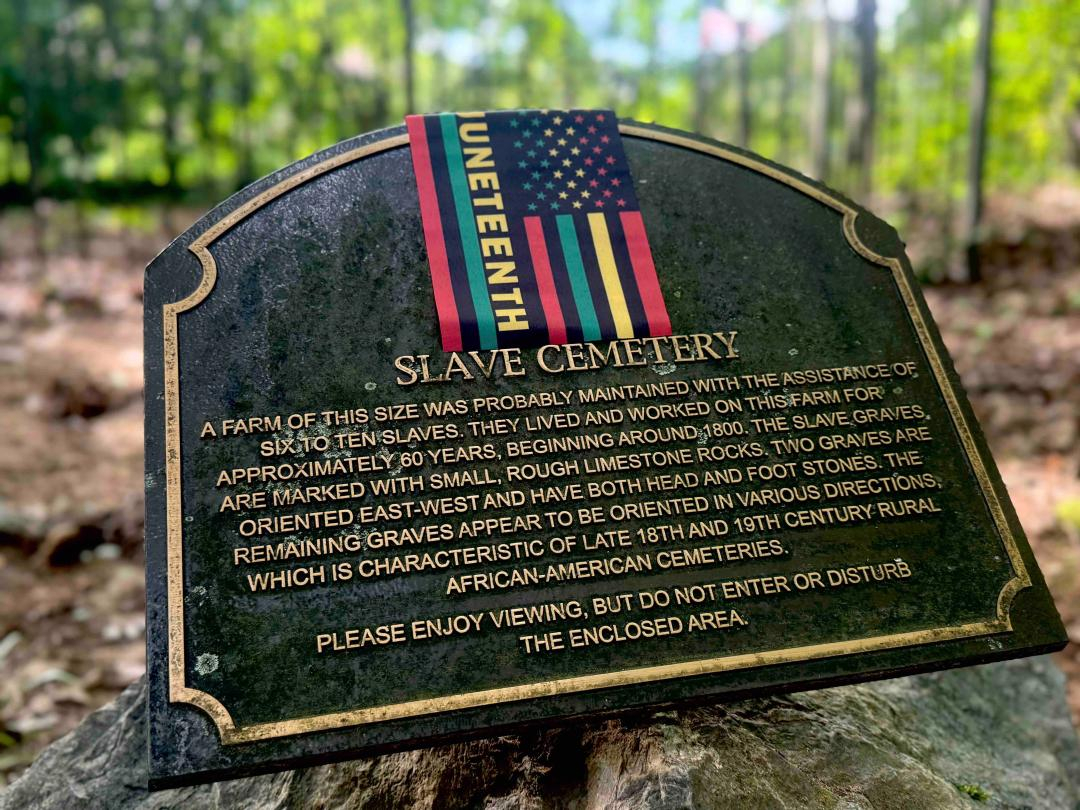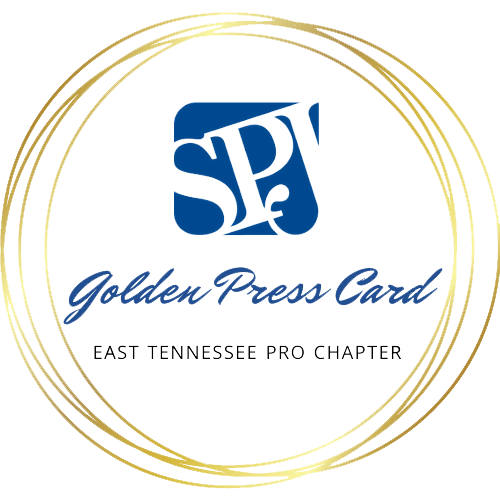
9 Industry, Innovation and Infrastructure (30)
Build resilient infrastructure, promote inclusive and sustainable industrialization and foster innovation
Network alert: Tennessee Sustainability Conference set for Gatlinburg
Written by Cindy Dupree Holloway The towering Space Needle in Gatlinburg offers views of Great Smoky Mountains National Park. The city is host to the Tennessee Sustainability Conference set to begin Aug. 20. Gatlinburg Chamber of Commerce
The towering Space Needle in Gatlinburg offers views of Great Smoky Mountains National Park. The city is host to the Tennessee Sustainability Conference set to begin Aug. 20. Gatlinburg Chamber of Commerce
Conservation education event is hosted in part by Tennessee Chamber to address sustainability challenges
GATLINBURG — The annual Tennessee Sustainability Conference is scheduled to take place Aug. 20-22 at the Park Vista Hotel. The conference is a partnership among Tennessee Recycling Coalition, Tennessee Chamber of Commerce and Industry, and Tennessee Environmental Conference. It brings together environmental professionals from across the region.
Nearby Great Smoky Mountains National Park is an internationally known treasure trove of biodiversity and accompanying sustainability research.
“The three-day event will provide attendees an accelerated learning opportunity featuring the latest trends and best practices in environmental sustainability,” said Tennessee Recycling Coalition Executive Director Amber Greene. “Staying on the cutting-edge of our ever-growing industry is essential to improving the lives of all Tennesseans. I encourage environmental leaders across the state to join us.”
According to organizers, the event will bring environmental professionals, decision-makers, government officials, business and industry leaders, attorneys, consultants, engineers, developers, architects, agribusiness leaders, energy experts, water planning districts, universities, public health officials, and solid waste and recycling experts, from across the region to learn about the latest trends and best practices in environmental sustainability.
- tennessee sustainability conference
- gatlinburg events
- sustainability education
- sustainability research
- sustainable agriculture
- sustainability
- tennessee recycling coalition
- amber greene
- park vista hotel
- learn about sustainability
- brownfield program
- brownfield remediation
- tire disposal
- green events knoxville
- solid waste
- mayors retreat gatlinburg
- great smoky mountains national park
- science research
Despite blowback and historical revisionism, Juneteenth is cause for grand celebration
Written by Angela Dennis A ribbon commemorating Juneteenth drapes a historic marker in one of Knoxville’s multiple cemeteries where enslaved people are buried. Angela Dennis
A ribbon commemorating Juneteenth drapes a historic marker in one of Knoxville’s multiple cemeteries where enslaved people are buried. Angela Dennis
East Tennesseans find ways to celebrate Juneteenth amid crackdowns on DEI
This story was originally published by Tennessee Lookout.
KNOXVILLE — As cities across Tennessee prepared for Juneteenth celebrations with banners unfurling, vendors setting up and leaders finalizing programs honoring Black liberation, a deeper question lingers: What does it mean to celebrate freedom in a state restricting how that freedom’s history is taught?
In Tennessee, state lawmakers have gutted DEI programs, banned books by Black authors and restricted how teachers can talk about race and history in the classroom.
This year’s celebrations have also come with cutbacks. Across the country, Juneteenth events have been scaled back due to shrinking DEI funding, canceled federal grants and retreat from corporate support for racial justice initiatives.
For many Black educators, organizers and students, the policies feel like a modern day echo of the delayed freedom Juneteenth was created to mark. It represents a continued struggle for true freedom and liberation.
Editorial: Clean energy jobs under attack and imperiled in Southeast
Written by Stephen Smith Macon-based Blue Bird is among Southeastern manufacturers that invested heavily in electric vehicle development thanks in large part to parts of the Inflation Reduction Act. The Biden-era IRA is facing blowback from the Trump administration, and the GOP-led Congress is trying to claw back billions already committed by the law. Blue Bird
Macon-based Blue Bird is among Southeastern manufacturers that invested heavily in electric vehicle development thanks in large part to parts of the Inflation Reduction Act. The Biden-era IRA is facing blowback from the Trump administration, and the GOP-led Congress is trying to claw back billions already committed by the law. Blue Bird
After DOGE, thousands of jobs still threatened and climate action under assault by GOP-led Congress
Stephen Smith is the executive director of the Southern Alliance for Clean Energy and chairs the Board of Directors of the Foundation for Global Sustainability, of which Hellbender Press is a project.
KNOXVILLE — As we navigate the complex landscape of America's energy transition, the Southeast finds itself at a critical juncture where federal policy decisions are attempting to block and reverse our region's clean energy future—and push up your monthly utility bills. This is not hyperbole; it is a sad reality that needs a strong response from those of us who want a clean, safe, vibrant future in which we all thrive.
The GOP-backed bill that moved from the House to the Senate threatens to undermine $73 billion in clean energy investments across our region by abruptly blocking federal policy support that has unleashed America’s clean energy economy, grown manufacturing and investments in the Southeast, and given citizens across our region ways to save money on energy while protecting human and environmental health.
If passed, this legislation could trigger utility rate increases nationwide, hitting households already struggling with rising costs. The timing couldn't be worse, as utility companies across the Southeast are rushing headlong into expensive and risky ventures—from nuclear plant construction to powering energy-hungry data centers—without adequate planning, regulation, or public input. Georgia Power's latest Integrated Resource Plan process and TVA’s rush to build new small nuclear reactors exemplify this troubling trend, proposing changes virtually guaranteed to increase customer bills while maintaining heavy reliance on polluting fossil fuels.
UT-Battelle, industry partners energize Oak Ridge High School STEM program
Written by Stephanie G. Seay Oak Ridge High School student Kira Colston demonstrates how to use a CNC machine at the Wildcat Manufacturing iSchool. Carlos Jones/ORNL, U.S. Dept. of Energy
Oak Ridge High School student Kira Colston demonstrates how to use a CNC machine at the Wildcat Manufacturing iSchool. Carlos Jones/ORNL, U.S. Dept. of Energy
Tech-heavy Wildcat Manufacturing iSchool functions as a student-run business
Stephanie Seay is a senior science writer and communications specialist at Oak Ridge National Laboratory.
OAK RIDGE — UT-Battelle, which manages Oak Ridge National Laboratory for the Department of Energy, has contributed up to $475,000 for the purchase and installation of advanced manufacturing equipment to support a program at Tennessee’s Oak Ridge High School that gives students direct experience with the AI- and robotics-assisted workplace of the future.
Through the Oak Ridge Public Schools Education Foundation, UT-Battelle donated $225,000 toward the purchase of equipment for the school and has committed up to $250,000 in ORNL staff time to assist with installation and calibration. Industry partners, including Lincoln Electric, ABB, Amazon Robotics and NAVUS, are also making in-kind contributions to the program.
The gifts support the school’s award-winning iSchool curriculum that began with a state grant as part of Tennessee’s Innovative School Models program launched in 2021. Oak Ridge High School’s Wildcat Manufacturing iSchool functions as a student-run business, offering experience in AI-generative design, additive manufacturing and robotics for local organizations, while students earn college credit.
Nokian Tyres makes rubber hit the road for conservation of endangered fish in Southeast Tennessee
Written by Wes Boling A laurel dace (Chrosomus saylori) collected by Tennessee Aquarium Conservation Institute scientists at Bumbee Creek in Rhea County, Tenn. Tennessee Aquarium
A laurel dace (Chrosomus saylori) collected by Tennessee Aquarium Conservation Institute scientists at Bumbee Creek in Rhea County, Tenn. Tennessee Aquarium
Spring City set to celebrate a rare denizen of Walden Ridge almost decimated by drought
Wes Boling is marketing communications manager for Nokian Tyres Dayton Factory.
SPRING CITY — Nokian Tyres will serve as presenting sponsor of Laurel Dace Day, a community celebration of an endangered fish, set for Saturday, May 17, in Spring City.
The inaugural event led by the Tennessee Aquarium raises awareness of the laurel dace, a critically endangered fish found only in the Walden Ridge area 20 miles from Nokian Tyres’ North American factory in Dayton.
Laurel Dace Day features a 5K race and half-mile family fun run, followed by a festival at the Spring City Nature Park with live music, a farmers’ market, local vendors and conservation education. The event is free to attend, other than registration fees for participation in the races.
Community members can learn more about the event and register for races at TNAqua.org
- laurel dace day spring city
- nokia tires environment
- rare fish of east tennessee
- cumberland plateau drought
- cumberland plateau fish
- tennessee aquarium
- wes boling
- dayton, tn
- walden ridge
- tennessee aquarium conservation institute
- melanie king aquarium
- nokian tyres’ north american factory
- spring city nature park
- leed
- leadership in energy and environmental design
- iso 14001 certification
UPDATED 6/25: More details emerge after Trump cuts bleed UT Agriculture Institute of $31 million
Written by Cassandra Stephenson and Ben Pounds The University of Tennessee burial mound on the agriculture campus in Knoxville dates to 644. The mound was constructed by native tribes of the Woodland Period and is on the National Register of Historic Places. Wikipedia Commons
The University of Tennessee burial mound on the agriculture campus in Knoxville dates to 644. The mound was constructed by native tribes of the Woodland Period and is on the National Register of Historic Places. Wikipedia Commons
DOGE bites off $37.7 million in science and other funding from University of Tennessee system; cuts include climate initiatives and pesticide safety education
This story was originally published by Tennessee Lookout. Highlighting added by Hellbender Press. The original story continues below. This story will be updated.
KNOXVILLE — The Trump administration has paused or defunded many programs at American universities, including some notable cuts in agriculture grants at the University of Tennessee.
Systemwide, a total of 42 grants to UT valued at $37.65 million ended, Melissa Tindell, UT’s assistant vice president of communication said, consistent with statistics she’s given other outlets. Eight of these terminated grants were going to the UT Institute of Agriculture and totaled $31.19 million.
Also, across the system, she said, the college had received a total of nine partial stop work orders, meaning students and staff cannot complete portions of those projects, though the total award amount hasn’t been impacted at this time.
“The most immediate impact has been the need to transition students and staff supported by these affected projects to alternative funding sources,” Tindell told Hellbender Press, reiterating a statement for Tennessee Lookout. “Essential work such as reporting, compliance and other research operations continue with adjusted support.”
Among the various research programs with terminated funding are several environmental projects.
- doge cuts
- trump cuts
- trump science cuts
- trump cuts to ut
- University of Tennessee Agricultural Institute
- cattle and climate change
- ut extension outreach
- ut ag campus cuts
- ut indian mound
- tennessee pesticide safety education program
- excet
- grasslands initiative utk
- climate smart grasslands
- doge science cuts
- the grasslands partnership
- climatesmart commodity
- climate smart grassland
- soil health
- biodiversity
Updated 2/28: Energy secretary on visit to an uncertain Oak Ridge shrugs at climate change; offers little concrete update on federal cuts
Written by Ben PoundsU.S. Sen. Bill Hagerty, R-Tenn.; U.S. Secretary of Energy Chris Wright; Rep. Chuck Fleischmann; R-Chattanooga; and Open AI CEO Greg Brockman spoke with the press during a tour of Oak Ridge-area nuclear facilities. Ben Pounds/Hellbender Press
Visit by energy secretary doesn’t address program cuts as former fracking CEO downplays climate change threat; visit comes following diversity program cuts; full extent of Oak Ridge impacts still unknown
Hellbender Press typically avoids the use of anonymous sources. The sources in this story spoke on condition they not be identified so they could speak on a sensitive matter.
This story will be updated. The original stories continue below.
OAK RIDGE — U.S. Secretary of Energy Chris Wright denied that climate change was a “crisis” and downplayed its threat during a visit to an international hub of scientific expertise rattled by early actions of the second Trump Administration. His visit did little to allay fears of cuts to staff and programs at Oak Ridge National Laboratory, where the most concrete signs of change have been the dismantling of diversity efforts.
Wright visited ORNL on Feb. 28, and at a press conference defended the Trump administration’s actions on climate change, energy sources and the Department of Government Efficiency (DOGE), a group headed by Elon Musk that has recommended cutting programs and staff in various government departments.
He did not announce any layoffs at the lab itself, however, and implied research related to climate there will continue. Oak Ridge National Laboratory is home to many kinds of related research, including at the Climate Change Science Institute. CCSI does modeling and gathers data on the climate, as well as working on solutions to the problem.
Wright promoted research on artificial intelligence, which he called “Manhattan Project II,” and nuclear energy, and he appeared alongside Sen. Bill Hagerty, R-Tenn., Rep. Chuck Fleischmann R-Chattanooga and Open AI CEO Greg Brockman, who also spoke and answered questions.
“I don’t think you’ll see any reduction in the science that we do regarding climate change or any of these other really big questions,” said Wright in response to a reporter’s questions about how cuts at the lab might affect climate change-related research at ORNL, which his department funds through a partnership with contractor Battelle and the University of Tennessee. He said, however, he still “100 percent” believed there was no climate “crisis” and said scientific reports backed up his view.
“We haven’t seen an increase in the frequency or intensity of hurricanes, floods, droughts, storms. Wildfires are on an uptick because we stopped managing our forests,” he said. “Deaths from extreme weather, which is what you hear the press and politicians’ fearmongering about, it declined over 90 percent in my lifetime as the population’s grown. So climate change is a real phenomenon. It’s just not even remotely close to the world’s biggest problem.” He also said an intergovernmental climate change report also showed economists saying climate change was not as important as issues like education, free trade and “empowerment.”
These claims are a mixed bag of truth. While the frequency of hurricanes hitting the United States, for example, hasn’t increased, a recent Columbia University study showed the tropical cyclones’ intensity for the East and Gulf Coasts has. Also unmentioned by Wright was any impact the climate has on disease or health conditions apart from extreme weather, a subject on which experts at Tennessee’s own Vanderbilt University have sounded the alarm.
Wright was CEO of a hydraulic fracking company, Liberty Energy, before his appointment.
“It’s a real thing, but nothing in the science of climate change or in the economics of climate change shows it to be the world’s biggest problem,” Wright said. “When you call something a crisis, it means we don’t have time to stop and think. We’ve just got to take action. That’s exactly the opposite of what climate science is.”
During the meeting, he also defended Musk, DOGE and Trump’s actions generally while not announcing any such cuts for the civilian research at Oak Ridge National Laboratory or the weapons maintenance at Y-12, which is managed by a different contractor. A reporter at the event mentioned an earlier instance in which workers at Y-12 National Security Complex received termination letters that were then rescinded. While the reporter asked him to offer reassurance on job security, he sidestepped that question.
- doge oak ridge
- doge cuts in oak ridge
- oak ridge national laboratory climate change institute
- did oak ridge get doge cuts
- trump and environment
- ornl jobs
- ornl employee meeting
- doe diversity
- doe office of science
- stephen streiffer
- inflation reduction act clean energy
- doe science focus
- ben pounds
- ornl source
- climate change
- is climate change real?
- chris wright
- energy secretary chris wright
- greg brockman
- open ai
ORNL partnership in Chattanooga tests new method for protecting quantum internet
Written by Oak Ridge National Laboratory Oak Ridge National Laboratory collaborated with commercial utility EPB and the University of Tennessee Chattanooga to develop and test the first transmission of an entangled quantum signal using multiple wavelength channels and automatic polarization stabilization over a commercial network with no downtime. Morgan Manning/ORNL, U.S. Dept. of Energy
Oak Ridge National Laboratory collaborated with commercial utility EPB and the University of Tennessee Chattanooga to develop and test the first transmission of an entangled quantum signal using multiple wavelength channels and automatic polarization stabilization over a commercial network with no downtime. Morgan Manning/ORNL, U.S. Dept. of Energy
OAK RIDGE — Researchers at the Department of Energy’s Oak Ridge National Laboratory joined forces with EPB of Chattanooga and the University of Tennessee at Chattanooga to demonstrate the first transmission of an entangled quantum signal using multiple wavelength channels and automatic polarization stabilization over a commercial network with no downtime.
The successful trial of this innovation marks another step toward the eventual creation of a quantum internet that could prove to be more capable and secure than existing networks.
Quantum computing relies on quantum bits, or qubits, to store information. Qubits, unlike the binary bits used in classical computing, can exist in more than one state simultaneously via quantum superposition, which allows combinations of physical values to be encoded on a single object.
The demonstration used automatic polarization compensation, or APC, to stabilize the polarization, or direction of the electric field oscillation in a light wave, of a signal sent over the EPB’s fiber-optic commercial quantum network. The approach used reference signals generated by lasers to continuously check the transmitted polarization, detected with an ultrasensitive method known as heterodyne detection.
APCs reduce data interference caused by outside forces like wind and temperature changes that can affect the fiber optic cables used to transmit quantum signals.
“One of our goals all along has been to develop quantum communications systems that operate seamlessly for users,” said Joseph Chapman, an ORNL quantum research scientist who led the study. “This is the first demonstration of this method, which enabled relatively fast stabilization while preserving the quantum signals, all with 100 percent uptime — meaning the people at either end of this transmission won’t notice any interruption in the signal and don’t need to coordinate scheduled downtime.”
The method enabled continuous transmission of the signals with no interruptions for more than 30 hours between the node on the University of Tennessee Chattanooga campus and two other EPB quantum network nodes, each about half a mile away. The UTC node held an entangled-photon source developed by Muneer Alshowkan, an ORNL quantum research scientist.
 The quantum network technology using automatic polarization compensation developed by ORNL was demonstrated in Chattanooga, Tennessee. The test utilized EPB’s fiber-optic commercial quantum network and involved the University of Tennessee Chattanooga and industry partner Qubitekk. Joe Chapman, Morgan Manning/ORNL, U.S. Dept. of Energy
The quantum network technology using automatic polarization compensation developed by ORNL was demonstrated in Chattanooga, Tennessee. The test utilized EPB’s fiber-optic commercial quantum network and involved the University of Tennessee Chattanooga and industry partner Qubitekk. Joe Chapman, Morgan Manning/ORNL, U.S. Dept. of Energy
ORNL engineering eco-friendly solvents
 ORNL researchers are using artificial intelligence to speed the identification of environmentally friendly solvents for industrial applications. Andy Sproles/ORNL, U.S. Department of Energy
ORNL researchers are using artificial intelligence to speed the identification of environmentally friendly solvents for industrial applications. Andy Sproles/ORNL, U.S. Department of Energy
OAK RIDGE — Oak Ridge National Laboratory scientists developed a method leveraging artificial intelligence to accelerate the identification of environmentally friendly solvents for industrial carbon capture, biomass processing, rechargeable batteries and other applications.
The research targets a class of solvents known for being nontoxic, biodegradable, highly stable, cost-effective and reusable.
The scientists developed a method to predict solvent viscosity — a key property impacting performance for industrial applications. They compiled nearly 5,000 data points on 672 solvents, evaluated quantum chemical features that guide solvent molecular interactions, and deployed an algorithm called categorical boosting to quickly parse the data and determine the best candidates.
“We reduced computational time and complexity with our approach, while still incorporating all possible molecular interactions,” said ORNL’s Mohan Mood.
ORNL’s Michelle Kidder said, “Interpretable machine learning helps us to design solvents with desired properties for carbon capture by reducing experimental time and cost in the laboratory.”
Less carbon, more chill: ORNL tech reduces refrigerator CO2 emissions by 30 percent
 A novel technology developed by ORNL keeps food and beverages refrigerated with an advanced evaporator, phase change materials, metal foam, direct-contact defrosting technology and a low global warming refrigerant. Oak Ridge National Laboratory
A novel technology developed by ORNL keeps food and beverages refrigerated with an advanced evaporator, phase change materials, metal foam, direct-contact defrosting technology and a low global warming refrigerant. Oak Ridge National Laboratory
OAK RIDGE — A technology developed by Oak Ridge National Laboratory keeps food refrigerated with phase-change materials, or PCMs, while reducing carbon emissions by 30 percent.
More than 100 million household refrigerators in operation across the United States consume up to 2 kilowatts of electricity daily. These refrigerators contribute to energy consumption and carbon emissions by using compressors that cycle on and off day and night, pumping refrigerants across evaporator coils to maintain low temperatures for fresh and frozen compartments.
(Hellbender Press previously reported on the development of new coolants and systems at ORNL).
ORNL’s innovation uses advanced evaporators with PCMs installed in each compartment for cold energy storage. PCMs are useful for heating and cooling because they store and release energy when changing from solids to liquids or vice versa. Researchers applied porous metals, direct-contact defrosting technology and a refrigerant with low-global-warming potential to enhance performance and minimize environmental impact.
“PCMs are integrated with evaporator coils to keep temperature constant, requiring one operating cycle and allowing refrigerators to operate almost 100% at nighttime, when energy use is lower,” ORNL’s Zhiming Gao said. “This reduces electricity demand, saves costs and maintains efficiency.”
— Oak Ridge National Laboratory
More...
Hellbender Press garners first-place award for investigation into proposed Oak Ridge airport
Written by Thomas Fraser
The honor continues Hellbender Press’s tradition of excellence in journalism.
KNOXVILLE — Hellbender Press: The Environmental Journal of Southern Appalachia, was honored with a first-place award by the East Tennessee Society of Professional Journalists (ETSPJ) for its probe into a controversial municipal airport proposed by the city of Oak Ridge.
Reporters Wolf Naegeli and Ben Pounds and Hellbender Press editor and publisher Thomas Fraser accepted the award during ETSPJ’s 2023 Golden Press Card awards, held May 16 at Maple Hall in downtown Knoxville. The honors, which are bestowed upon television, radio, print and digital media, “strive to honor the best journalism in the eastern region of Tennessee from the past year,” according to ETSPJ.
Hellbender Press was honored with first place in the digital space for its investigation into the proposed airport, which the city maintains would juice economic development, especially in the high-tech business realm.
ORNL chemists invent a more efficient way to extract lithium
 Oak Ridge National Laboratory
Oak Ridge National Laboratory
OAK RIDGE — Chemists at the Department of Energy’s Oak Ridge National Laboratory have invented a more efficient way to extract lithium from waste liquids leached from mining sites, oil fields and used batteries. They demonstrated that a common mineral can adsorb at least five times more lithium than can be collected using previously developed adsorbent materials.
“It’s a low-cost, high-lithium-uptake process,” said Parans Paranthaman, an ORNL Corporate Fellow and National Academy of Inventors Fellow with 58 issued patents. He led the proof-of-concept experiment with Jayanthi Kumar, an ORNL materials chemist with expertise in the design, synthesis and characterization of layered materials.
“The key advantage is that it works in a wider pH range of 5 to 11 compared to other direct lithium extraction methods,” Paranthaman said. The acid-free extraction process takes place at 140 degrees Celsius, compared to traditional methods that roast mined minerals at 250 degrees Celsius with acid or 800 to 1,000 degrees Celsius without acid.
Lithium is a lightweight metal commonly used in energy-dense and rechargeable batteries. Electric vehicles, which are needed to achieve net-zero emissions by 2050, rely on lithium-ion batteries. Industrially, lithium is extracted from brines, rocks and clays. The ORNL innovation may help meet rising demand for lithium by making domestic sources commercially viable.
Momentum builds slowly for TVA’s post-coal plans
Written by Ben Pounds Supercomputer simulation of plasma turbulence in a spherical tokamak, which is an experimental machine designed to harness the energy of fusion. Image courtesy of Walter Guttenfelder, Princeton Plasma Physics Laboratory and Filippo Scotti, Lawrence Livermore National Laboratory via DOE.
Supercomputer simulation of plasma turbulence in a spherical tokamak, which is an experimental machine designed to harness the energy of fusion. Image courtesy of Walter Guttenfelder, Princeton Plasma Physics Laboratory and Filippo Scotti, Lawrence Livermore National Laboratory via DOE.
Fusion research, natural gas, solar power and battery improvements at heart of TVA’s plans to wean itself off coal
OAK RIDGE — The Tennessee Valley Authority is phasing out coal and announcing developments tied to other energy sources at two plants that sit on either side of Oak Ridge.
One of the options includes a fusion test site. Scientists have long pursued fusion energy, though the technology remains in infancy and has yet to generate electricity anywhere.
The TVA coal plant on Edgemoor Road in the Claxton community in Anderson County closed Dec. 1 last year. TVA remains uncommitted to any plans for most of the land around the plant. A company recently announced, however, that it plans tests connected to fusion power in a small part of one of Bull Run’s old buildings by 2028. It will be an experiment and not generate power directly.
Meanwhile, TVA plans to retire Kingston Fossil Plant on Swan Pond Road in Harriman by the end of 2027. Its nine coal-fired units power about 818,000 homes. To replace the power generated at the plant, TVA plans to build a new complex at the Kingston plant’s site, combining natural gas, solar power and battery storage.
TVA plans to retire all its coal plants by the 2030s.
Experts and citizens plan and commiserate over TVA’s lack of public process
Written by Élan Young Tennessee state Rep. Justin J. Pearson speaks to community members assembled for the evening discussion during the People’s Voice on TVA’s Energy Plan. John Waterman/Appalachian Voices
Tennessee state Rep. Justin J. Pearson speaks to community members assembled for the evening discussion during the People’s Voice on TVA’s Energy Plan. John Waterman/Appalachian Voices
A lack of public process brought together a coalition of environmental organizations
NASHVILLE — In every state except Tennessee, for-profit utilities and their regulators are required to get public input about energy-resource planning.
These Integrated Resource Plans (IRPs) provide an opportunity for a utility to demonstrate that the ratepayer money the utility spends is on the best mix of energy investments that meet this objective.
In Tennessee, however, TVA, which is the nation’s largest public power provider, has no process for engaging the public on its IRPs.
It is this lack of public process that brought a coalition of environmental organizations together to host a mock public hearing in a Nashville church last month presided by Ted Thomas, former chair of Georgia Center for Energy Solutions. Their goal was to call attention to the fact that TVA acts more like a corporation or a self-regulated monopoly than as a public utility. The groups say that lack of public involvement in the process harms Tennesseeans across the board.